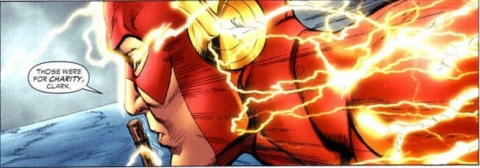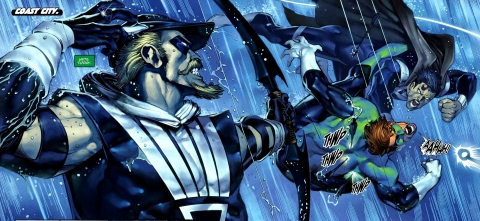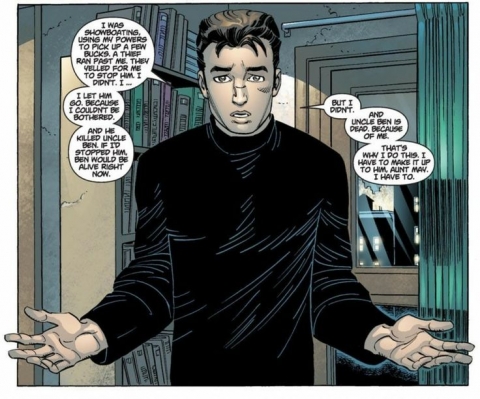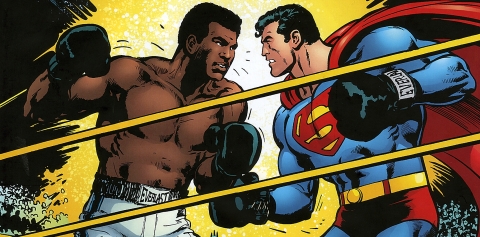52 weeks. 52 different writers. 2 trade paperbacks or hardcovers a week. Each week I’ll take a look at a different writer and read two different collected editions from within that person’s repertoire to help in the examination of their work.
Truth be told, this challenge is leaving me exhausted. I have 22 more graphic novels to read before the end of this challenge after we’re done with this week’s writer. My girlfriend also hasn’t left me yet as a result of this challenge…which is nice. We’re almost in the home stretch and I couldn’t be happier!
Geoff Johns began interning under the famous director Richard Donner (known for films such as Superman, The Goonies, and Lethal Weapon) in the 90’s. Johns quickly became a production assistant under Donner, being mentored by the legendary director. While working on one of Donner’s films, Johns was introduced to DC Comics Group Editor Eddie Berganza, whom invited Johns to tour the DC offices, reigniting an old love he had for comics from his youth. This would open the door for Johns to meet comic talent like David Goyer and James Robinson who were working on the JSA title at that time. Eddie encouraged Geoff Johns to pitch some ideas and would eventually go on to co-write JSA with James Robinson shortly before becoming the primary writer on The Flash. After a healthy run on The Flash, Johns would leave the character only to return many years later in an attempt to resurrect the long dead Barry Allen, one of the most popular characters to don The Flash costume.
Flash Rebirth
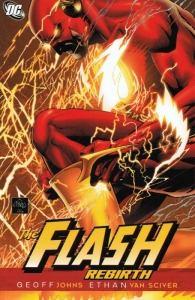 Years ago, Barry Allen, otherwise known as The Flash, sacrificed his life to save the entire Multiverse from collapsing during an event referred to as a “Crisis”. Following yet another Crisis in the DC Universe, Barry Allen has miraculously returned to the land of the living. Unsettled by how much the world has changed around him, Barry struggles to adjust to his recent return to life. Now the world has multiple speedsters, ranging from his successor, Wally West, to his grandson, Bart Allen (a.k.a. Kid Flash), or even other people who aren’t related to him like Jessie Quick. As Barry begins to become more acclimatized to his life, he begins to feel an impending and awful disturbance. The Speed Force, the essence of all speedsters’ powers, appears to be disrupted, causing anyone who has come in contact with the Speed Force to age into dust if they then come into contact with Barry. Desperate for answers, Barry begins to search within the Speed Force for any truth he can uncover about his return to life, which in turn unearths some startling truths surrounding the one case he never gained closure on; his mother’s death.
Years ago, Barry Allen, otherwise known as The Flash, sacrificed his life to save the entire Multiverse from collapsing during an event referred to as a “Crisis”. Following yet another Crisis in the DC Universe, Barry Allen has miraculously returned to the land of the living. Unsettled by how much the world has changed around him, Barry struggles to adjust to his recent return to life. Now the world has multiple speedsters, ranging from his successor, Wally West, to his grandson, Bart Allen (a.k.a. Kid Flash), or even other people who aren’t related to him like Jessie Quick. As Barry begins to become more acclimatized to his life, he begins to feel an impending and awful disturbance. The Speed Force, the essence of all speedsters’ powers, appears to be disrupted, causing anyone who has come in contact with the Speed Force to age into dust if they then come into contact with Barry. Desperate for answers, Barry begins to search within the Speed Force for any truth he can uncover about his return to life, which in turn unearths some startling truths surrounding the one case he never gained closure on; his mother’s death.
Geoff Johns does his best to reintegrate Barry Allen back into the DC Universe with The Flash: Rebirth. Say anything you want about Geoff Johns as a creator (I personally adore much of the work he’s done over his career so I typically have nothing but nice things to say about him anyways) but there’s one thing you can’t deny; he’s one of the most passionate writers in comics today. Every bit of work he does do, he pours his heart and soul into it, fully investing himself in the characters he creates or writes about. This was apparent when Johns rebooted the Green Lantern franchise back in the early 2000’s with Green Lantern: Rebirth and that’s exactly what he tries to do here with The Flash: Rebirth as well. With that said, when you compare both of those Rebirth stories, The Flash comes out as a far inferior product. It’s an instance where it’s almost better to read The Flash: Rebirth without having read any of Geoff Johns’ other work first because it just doesn’t strike you in the way that Green Lantern: Rebirth does.
All of this is not to say that The Flash: Rebirth isn’t an enjoyable story, it’s a great launching pad for readers who are looking to understand the character of Barry Allen and it achieves what it sets out to do; bring Barry Allen back to life in the DC Universe. Let’s take a few paragraphs to rip into the story before I get to what’s enjoyable about it. One of the biggest hurdles it faces is the fact that the story feels like it picks up in media res in some sense. For a story titled “Rebirth” you’re lead to believe that you’ll see the resurrection of the character of Barry Allen, which isn’t true because he is actually resurrected in the DC Comics event that precedes this storyline, “Final Crisis”. Barry Allen returns in that storyline and then Rebirth is about Allen trying to pick up the pieces of his life after having been away for so many years. Everything around him has changed, people have aged, married, passed away, and all of this unsettles Barry. Honestly, a more appropriate name for this series would be a title along the lines of “The Flash: Picking Up The Pieces” or any other form of title that implies The Flash has returned and is trying to put his life back together. Immediately, the title is disingenuous in a sense as the rebirth of Barry Allen has occurred long before this story even gets the chance to hit the ground running.
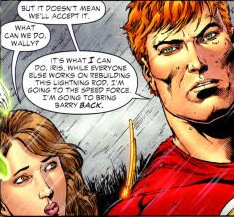 Bare with me for just another paragraph of sinking into what’s wrong The Flash: Rebirth as it’s impossible to not draw parallels between The Flash: Rebirth and Green Lantern: Rebirth. Green Lantern: Rebirth is a better story, there isn’t a more concise way to put it, it just is. If you haven’t read it yet, I highly recommend it as it’ll make you feel a genuine sense of care towards the resurrected Hal Jordan. That story delivers everything that The Flash: Rebirth lacks, as it gets across the personalities of the multiple Green Lanterns who play a factor on the narrative as well as showing you how Hal Jordan returns to the land of the living as the Green Lantern. Alternatively, The Flash: Rebirth struggles because of the massive amount of speedsters it crams into the story. If you’ve read Geoff Johns’ previous work on The Flash from years gone by, with Wally West under centre, than a good amount of these characters will be familiar. But if this is your first experience with The Flash or his supporting cast, you’ll just feel overloaded by the amount of different speedsters you have to juggle. Off the top of my head I can think of at least eight speedsters who are referenced, highlighted, or impact the story in some form and that’s just counting the good guys. Where Green Lantern: Rebirth succeeds in highlighting what makes every Green Lantern in charge of protecting Sector 2814 unique, The Flash: Rebirth largely relies on visual cues to show you the difference between Wally West and Barry Allen but even then, there’s so much red or yellow on the page at any given time that it’s easy for you to have to stop to gather yourself, slowing you down in a story that should be a high-speed thrill.
Bare with me for just another paragraph of sinking into what’s wrong The Flash: Rebirth as it’s impossible to not draw parallels between The Flash: Rebirth and Green Lantern: Rebirth. Green Lantern: Rebirth is a better story, there isn’t a more concise way to put it, it just is. If you haven’t read it yet, I highly recommend it as it’ll make you feel a genuine sense of care towards the resurrected Hal Jordan. That story delivers everything that The Flash: Rebirth lacks, as it gets across the personalities of the multiple Green Lanterns who play a factor on the narrative as well as showing you how Hal Jordan returns to the land of the living as the Green Lantern. Alternatively, The Flash: Rebirth struggles because of the massive amount of speedsters it crams into the story. If you’ve read Geoff Johns’ previous work on The Flash from years gone by, with Wally West under centre, than a good amount of these characters will be familiar. But if this is your first experience with The Flash or his supporting cast, you’ll just feel overloaded by the amount of different speedsters you have to juggle. Off the top of my head I can think of at least eight speedsters who are referenced, highlighted, or impact the story in some form and that’s just counting the good guys. Where Green Lantern: Rebirth succeeds in highlighting what makes every Green Lantern in charge of protecting Sector 2814 unique, The Flash: Rebirth largely relies on visual cues to show you the difference between Wally West and Barry Allen but even then, there’s so much red or yellow on the page at any given time that it’s easy for you to have to stop to gather yourself, slowing you down in a story that should be a high-speed thrill.
For the sake of not making this post seem like it should be titled “Why you should read Green Lantern: Rebirth instead of The Flash: Rebirth”, let’s hit the positives of this story, of which there are plenty. The most important part of Johns’ story is that it encompasses everything you need to know about Barry Allen. In a lot of ways, that is truly where the title “Rebirth” comes from, as it resurrects the ideals of Barry’s life while giving you a great retrospective that easily tells you what makes Barry tick. Johns gives you an intimate look into the life of Barry Allen, ranging from his surprise romance with his wife Iris Allen-West, to the mystery of his mother’s death that has plagued him for years. Barry Allen is a man who is always on the go, making the fastest man alive the man who is almost always late as well. It’s a fascinating examination of how that, even with an ability like super speed, a person can still be remarkably human by doing simple things like always being late. A lot of these moments where Johns cuts back in time to show us Barry’s life before he died are the best moments of the entire mini-series, as it highlights what Geoff Johns is best at; reminding us that superheroes can be humans too, with powerful and emotional histories.
Geoff Johns heavily uses the “Speed Force” in The Flash: Rebirth, the strangely scientific/mystical explanation for as to where the speedsters get their powers from. In a way, it all ties together how Barry Allen comes back to life, as well explaining a few other questions that plagued DC fans surrounding other comic book events. The Speed Force is a key element in the world of The Flash and Johns shows it to readers in a way that is interesting and engrossing instead of being potentially daunting, which would be incredibly easy to think consider the high sci-fi element of this odd force. It all weaves back within itself as Johns uses it to also cast the villain for the story, a member of The Flash’s rogues gallery that anyone would be familiar with, even if you know next to nothing about The Flash. Johns gives the villain ammunition in the way of the Speed Force and uses it to really push the boundaries on the latter half of the story, making the last few issues a consistent series of climaxes that will leave the reader feeling rewarded.
Collects: The Flash: Rebirth #1-6.
Best Character: Barry Allen.
Best Line Of Dialogue/Caption: “As long as I remember Iris, I’ll be alright” – Barry Allen.
Best Scene/Moment: The Flash vs. Superman race – Issue 3.
Best Issue: Issue 6. Issue 6 is easily the strongest batch of issues as it wraps up everything perfectly. You get revelations, a showdown that was decades in the making, plenty of big changes in the lives of all the characters and a classic scene that concludes the series on a note that couldn’t be more perfect. The dialogue hits the right way, the action is engaging, and all your character moments are memorable. This one is an issue that takes off running and doesn’t stop, even when the story ends.
Why You Should Read It: You should read The Flash: Rebirth not because it’s a game-changing story but because it highlights Geoff Johns as a writer who is beyond capable of casting superheroes in a human light. He just has this knack for stripping away all the needless elements and getting to the core of the characters, which is exactly what he does with Barry Allen in this story. He shows us what drives this man to be the hero he is, the demons that have plagued him, but also shows us the beautiful sides to his life that keep him a fun and playful character. Geoff Johns may craft a bit of an uneven story here but he does strike the chord that shows us he knows how to write superheroes in a way that makes them relatable, making that reason enough to pick up this story.
Blackest Night
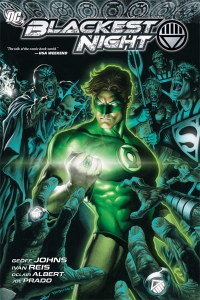 Geoff Johns is largely regarded for his resurrection of the Green Lantern Corps in the mid-2000’s under the DC Comics banner. Hal Jordan became a homicidal maniac back in the dreaded 90’s, becoming a villain and killing many members of the Green Lantern Corps before ultimately being put down. In the years since that time, the Green Lantern line had somewhat struggled, never really emerging as a front-runner title due to waning interest in the characters and properties. When Geoff Johns came aboard the Green Lantern title in 2005, he completely revamped the character, modifying his origin, villains, and even the supporting cast to give Hal Jordan a fair shake at redemption. Johns’ plans were a success and lead to one of DC Comics’ most thrilling events in recent years, Blackest Night.
Geoff Johns is largely regarded for his resurrection of the Green Lantern Corps in the mid-2000’s under the DC Comics banner. Hal Jordan became a homicidal maniac back in the dreaded 90’s, becoming a villain and killing many members of the Green Lantern Corps before ultimately being put down. In the years since that time, the Green Lantern line had somewhat struggled, never really emerging as a front-runner title due to waning interest in the characters and properties. When Geoff Johns came aboard the Green Lantern title in 2005, he completely revamped the character, modifying his origin, villains, and even the supporting cast to give Hal Jordan a fair shake at redemption. Johns’ plans were a success and lead to one of DC Comics’ most thrilling events in recent years, Blackest Night.
The Book of Oa tells of a prophecy for the “Blackest Night”, the impending end of life thanks to the recent discovery of the different holders of power rings across the emotional colour spectrum. Fear, rage, love, hope, avarice, compassion, and willpower make up the colours of the spectrum, of which each has a corps that is capable of wielding a coloured ring that corresponds to the emotion. Hal Jordan, one of the many Green Lanterns of Sector 2814 (otherwise known as Earth), has recently been pulled to every end of the galaxy discovering or combating these new corps. Hal more recently finds himself back on Earth with his resurrected friend, Barry Allen, otherwise known as The Flash. Aside from Allen’s sudden and unexpected return, the superhero community has recently been rocked by the death of key members of the Justice League of America, with both Martian Manhunter and Batman having perished during a recent crisis at the hands of the villain Darkseid. Barry and Hal are both men who know their fair share about death and resurrection, so when a startling force of nature begins to wreak havoc on not only Earth, but across the entire galaxy as well, both men are forced to take action. The Black Lantern Corps begins to assemble, embodying the power of death, as it raises long dead villains and allies from their graves. Teaming with Mera, the wife of the late Aquaman, and the Atom, a man reeling from the loss of his deranged wife, Green Lantern and Flash work diligently to find a way to stop this sudden wave of resurrected heroes and villains who are out to kill them. Short on time and unable to contact his fellow Corpsmen, Hal Jordan reaches out to the only other beings capable of helping him to stop the Black Lantern Corps, the five other Corps that have either become allies or enemies over the recent months of his life.
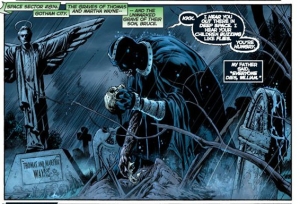 An epic Green Lantern crossover brilliantly disguised as a DC Comics event, Blackest Night is perhaps not only one of the finest Green Lantern storylines you’ll have the pleasure of reading, but one of the stronger DC Comics events you’re likely to read as well. Taking several mid-tier characters and throwing them up with A-level talent, Geoff Johns pens a superhero/zombie epic that is equally engaging as it is satirical. In a lot of ways, the story is so serious at times that it’s easy to miss that Geoff Johns is actually poking fun at the fact that death is a woefully overused plot device in comics and that, more importantly, rarely does it stick. He churns out big name characters who have been deceased for a long time while also bringing back obscure characters that you may have forgotten even perished in the first place, all for the sake of building the superhero zombie horde that the heroes face in this tale. The after effect of what Johns does with this story only helps to reinforce that one should look at Blackest Night as a satire as it does everything you can expect with the death trope in comic books. Heroes rise and fall at the drop of a hat, and although maybe Johns didn’t even intend for this story to poke fun at the topic, he most certainly does one way or another.
An epic Green Lantern crossover brilliantly disguised as a DC Comics event, Blackest Night is perhaps not only one of the finest Green Lantern storylines you’ll have the pleasure of reading, but one of the stronger DC Comics events you’re likely to read as well. Taking several mid-tier characters and throwing them up with A-level talent, Geoff Johns pens a superhero/zombie epic that is equally engaging as it is satirical. In a lot of ways, the story is so serious at times that it’s easy to miss that Geoff Johns is actually poking fun at the fact that death is a woefully overused plot device in comics and that, more importantly, rarely does it stick. He churns out big name characters who have been deceased for a long time while also bringing back obscure characters that you may have forgotten even perished in the first place, all for the sake of building the superhero zombie horde that the heroes face in this tale. The after effect of what Johns does with this story only helps to reinforce that one should look at Blackest Night as a satire as it does everything you can expect with the death trope in comic books. Heroes rise and fall at the drop of a hat, and although maybe Johns didn’t even intend for this story to poke fun at the topic, he most certainly does one way or another.
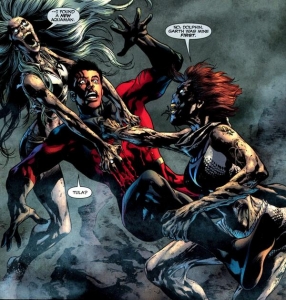 The mass resurrection of dead superheroes is a concept that, for the most part, appears to have remained largely untouched. It’s also a concept, that when said aloud, sounds like it could easily be one of the most disheartening, cliché ideas ever. Thankfully, Geoff Johns crafts a tale that is not only compelling, but the furthest thing from your “run-of-the-mill” superhero or zombie story. Instead, it latches on to key elements of both genres and twists them in a way that gives readers a new experience that will leave them satisfied. The story takes the action of the superhero genre, combines it with the horror of zombies, and then tops it off with Geoff Johns’ exquisite ability to humanize superheroes. We get a strong glimpse at the human nature of characters like Hawkman, Mera, The Atom, and many more as we see how they react to the loss of loved ones, or the return of said loved ones. The humanity that Johns instills into these super beings is some of the best characterizations you’ll find when it comes to superhero comics, leaving you with moments where you’ll forget that these people are human beings with exceptional powers and instead see them as just regular characters.
The mass resurrection of dead superheroes is a concept that, for the most part, appears to have remained largely untouched. It’s also a concept, that when said aloud, sounds like it could easily be one of the most disheartening, cliché ideas ever. Thankfully, Geoff Johns crafts a tale that is not only compelling, but the furthest thing from your “run-of-the-mill” superhero or zombie story. Instead, it latches on to key elements of both genres and twists them in a way that gives readers a new experience that will leave them satisfied. The story takes the action of the superhero genre, combines it with the horror of zombies, and then tops it off with Geoff Johns’ exquisite ability to humanize superheroes. We get a strong glimpse at the human nature of characters like Hawkman, Mera, The Atom, and many more as we see how they react to the loss of loved ones, or the return of said loved ones. The humanity that Johns instills into these super beings is some of the best characterizations you’ll find when it comes to superhero comics, leaving you with moments where you’ll forget that these people are human beings with exceptional powers and instead see them as just regular characters.
In terms of weakness, I found that Blackest Night only experienced one, in which it leaves out one of the major plot points in favour of telling it across a different book. With Blackest Night technically being a “major” DC event, it needs to have tie-in issues, with a plethora of them falling on the side of the Green Lantern and Green Lantern Corps titles from this time period. Unfortunately, Geoff Johns began building the Blackest Night saga across the primary Green Lantern title, introducing all the different Lantern Corps within that title and showing how they interact with Hal Jordan. One of the major plot points in Blackest Night is that the light from the Green Lantern’s power ring can only defeat a Black Lantern with the help of another coloured Lantern Corp. As such, Hal Jordan has to go around and gather up these other Corps to help him in his fight against the Black Hand only we don’t get to see any of that unfold in the midst of Blackest Night’s pages. Instead, Hal Jordan suddenly disappears in the middle of the event to only come back when it’s most convenient to the story with the other corps in tow. His adventures that involve the gathering of the other respective Corps isn’t something the reader gets to enjoy even though Geoff Johns does a stellar job of making it seem mildly interesting to the reader. It’s not even a terrible thing seeing as Geoff Johns still pens out that material over in the primary Green Lantern series, it’s just disappointing as a reader that you have to reach for the full story into other titles for this particular plot point.
Collects: Blackest Night #0-8.
Best Character: Hal Jordan.
Best Line Of Dialogue/Caption: “No matter how brightly I shine my light today, the shadows won’t be lifted.” – Hal Jordan.
Best Scene/Moment: A new corps is formed – Issue 8.
Best Issue: Issue 4. Falling around the halfway mark of this collection, issue 4 is an issue that delivers consistent home run moments. It’s a key issue that sets all the major players of the story on the path towards the book’s climax. Flash, The Atom, and Mera hold down the frontline of the battle against the Black Lanterns on Earth in an epic series of fights while Hal Jordan sets out to achieve a potential endgame that could secure a victory for the good guys. You get plenty of glimpses at the humanity of many of these primary characters as they’re thrown into brutal fight after fight against long-lost allies and enemies. All this, plus we finally get the reveal of who the primary antagonist of this story is.
Why You Should Read It: A little bit of superhero, a little bit of horror, and a whole lot of awesome, Blackest Night is exactly what anyone who wants to read a good self-contained story should read. What’s even more brilliant about Blackest Night is that it actually isn’t even self-contained as there are about 40+ issues of Green Lantern that serve as a prelude to this event by Geoff Johns that are also fantastic. It’s the type of story that either payoffs for long time readers, satisfies new comers, or gets people interested in exploring more of the DC Universe or characters like the Green Lantern.

